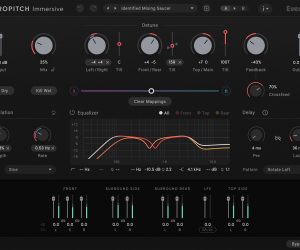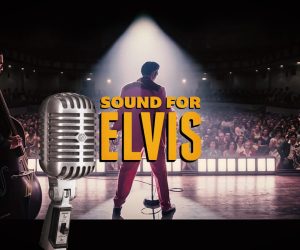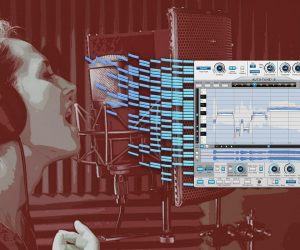
APB DYNASONICS MIXSWITCH

Managing the outputs of two consoles at once has never been so easy.
Text: Gareth Stuckey
Imagine this situation: you have two audio sources, and you need both to go to the same system. Examples of this might be two FOH consoles in a festival flip/flop situation, a ‘main’ and ‘backup’ console scenario, or a house and DJ setup… sound familiar?
There are plenty of situations like this, yet technically speaking there has never been a cheap and efficient way to make this happen – until now. The old way – and it was a festival standard for a while – usually involved a Midas M88 Matrix Mixer… it sort of did the job, but the flaw in the concept was that someone still had to push the faders into position, set the pots at unity gain etc – there was a lot of room for error. What’s more, the solution was frighteningly expensive.
To solve this problem elegantly and economically, APB DynaSonics recently released a product called the MixSwitch. It’s a simple and user-friendly solution to the problem, with a lot of extra features thrown in for good measure, making it a dream to use.
IN & OUT IN A FLASH
In its most basic role, the MixSwitch can painlessly connect a couple of consoles together and allow you to choose which one to send to the PA – nothing you couldn’t do with the old Midas, or on a processor with multiple inputs… however, there’s a lot more to this unit.
There are two sets of main inputs on the MixSwitch, each with four XLR connections (for Right, Left, Sub and Infill for example). The status of these inputs is determined on the far right-hand side by illuminated green switches that show which set of inputs is ‘live’ through the unit. You can also change the mode of these buttons to ‘Sum,’ and direct both sets of inputs to the outputs. There’s also a brightly illuminated (red) switch between them that mutes both main inputs.
Next is the ‘Stereo Line Input’. This is in addition to the main inputs, and is intended for use in conjunction with a fixed input from another source. Let’s say there’s a TV feed that needs its audio component fed into the PA in between bands (which is common at many major festivals where there’s never silence). In this situation, the MixSwitch allows engineers who may be loading programs (on digital boards) or madly patching inserts etc (on analogue boards) to be in full control of their respective consoles while the DJ is playing back through the PA, independent of the goings on. This stereo input also has
a front-panel level knob and user-adjustable limiter, which
is very handy.
To the left of all of this is the ‘Stereo Program Input,’ again with its own volume control and adjustable limiter. This section also features simple high and low-band EQ, which is a real blessing. Too many times have I wanted to take the bottom end out of intro music – so the band sounded huge when they came on – but couldn’t because the music was returning through a stereo input with no facility for EQ.
Program inputs are ¼-inch jack and RCA on the rear panel, with an ‘Alternate’ mini-jack on the front panel that’s clearly intended for CD background music. This connection point is a perfect example of how well the MixSwitch has been designed for the real world. When the unit is racked up, a cable should be inserted here and taped down so it stays there! Each engineer that walks up to the console with their intro music on an iPod would then only need to plug in and switch the ‘Alternate’ input button (which again sports a bold and obvious light) to change from the stock CD music to their specific intro.
The final front panel feature is an Announce Microphone input. This has XLR inputs available on both front and rear panels for easy patching (switch selectable), as well as phantom power for condenser mics – I’m not sure who’s using a condenser as a FOH announce mic, but at least you have the option! This input allows you to make announcements from FOH without tying up console channels or getting in the road of an engineer setting up a show in earnest. And in the case of digital FOH consoles, this also allows the engineer to load their program and not worry about assigning inputs and outputs for things that shouldn’t be their problem. In the case of a school function or similar, where there are commonly lots of intros, it would even be possible to give the MC a radio mic, have the receiver at FOH patched directly into the Announce Mic input, so the MC was always available no matter what. An interesting safety note as well… In an emergency situation – say at a rainy festival where the console goes south – it would be a breeze to patch a mic into the front input and immediately address the patrons (who get very restless very quickly in silence if they don’t know what’s going on). I’ve been in this situation at least once, and I would happily pay the recommended retail of this unit just to avoid it happening again!
BUT WAIT, THERE’S MORE
As if that wasn’t enough, all of the inputs mentioned above have a cue switch, and there’s even a front panel headphone output (both ¼-inch and mini-jack) with an adjustable level that provides enough grunt to drive your average headphones and cue up your intro music while the band’s still rocking.
All in all, the APB DynaSonics MixSwitch is a great unit that offers some great features in a new and ingenious configuration. If I were a systems engineer, the walk-up FOH guy, or the
bar owner, I would definitely appreciate one of these babies
in the rack.
















RESPONSES